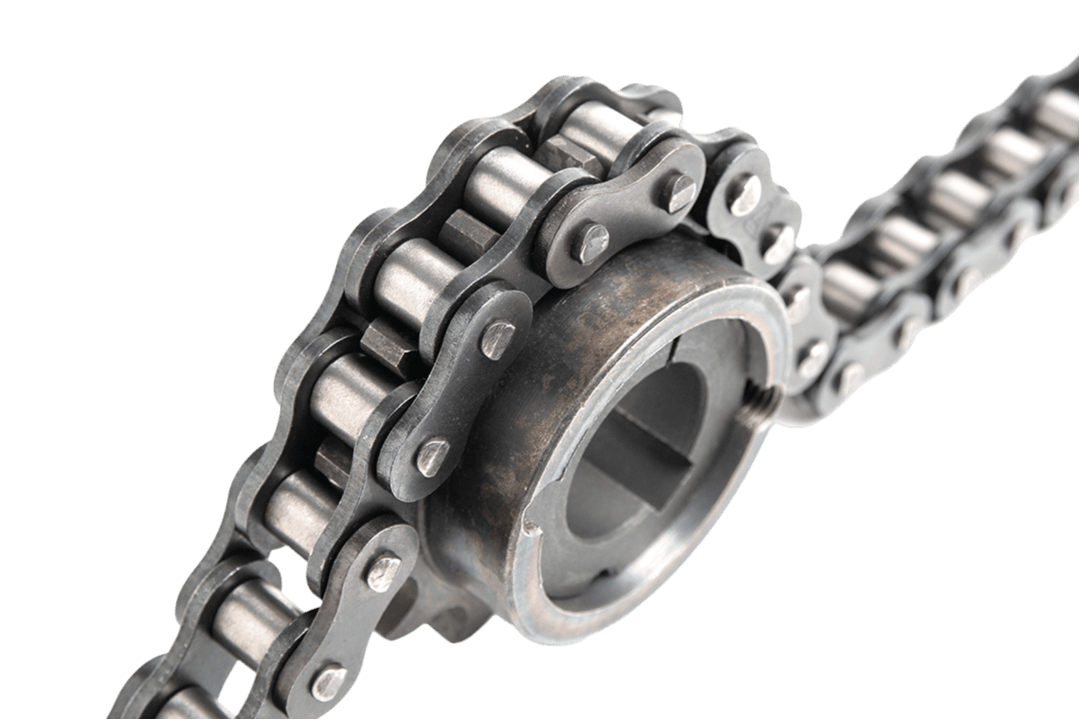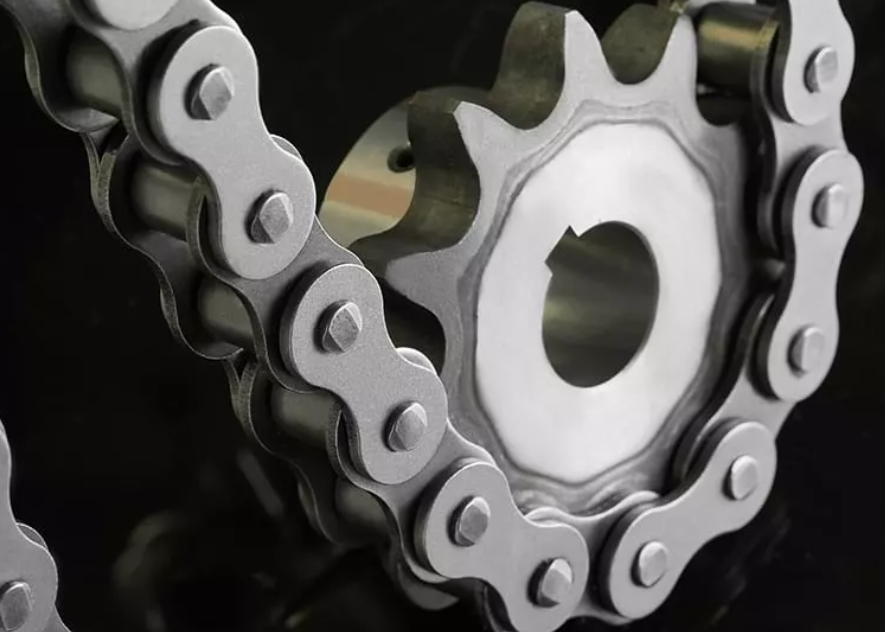
Are you using the right chain in your conveyor system? Welded chains are often the best choice for heavy-duty industrial applications. Unlike standard or riveted chains, welded chains offer superior strength and durability, making them ideal for demanding environments.
In this article, we’ll explore the advantages of welded chains in conveyor systems and why they are essential for industries like manufacturing, mining, and construction. You’ll learn how these chains can improve performance, reduce downtime, and ensure safety in high-stress environments.
Understanding Welded Chains in Conveyor Systems
What is a Welded Chain?
A welded chain is a type of industrial chain where the links are joined using welding technology rather than rivets. This method creates a stronger, more durable connection between the links, making the chain ideal for handling heavy loads and withstanding harsh environments.
The manufacturing process involves using high-quality materials like steel, which are welded together to form a continuous, seamless chain. Welding creates a strong bond between the links, allowing for better resistance to wear and tear compared to traditional chains. Advanced techniques, such as automatic welding machines, ensure precision in the construction of each link.
What Makes Welded Chains Different from Other Chains?
Welded vs. Riveted Chains
Welded chains differ significantly from riveted chains in their construction. While riveted chains use rivets to hold the links together, welded chains rely on a fusion of the links through welding. This makes welded chains much stronger and more reliable, especially in high-stress environments.
Construction and Durability
Welded chains excel in environments that demand strength and endurance. Their construction is more solid compared to other chains, ensuring fewer breakdowns and a longer operational lifespan. They are designed to resist both mechanical stress and environmental factors like rust, making them a versatile choice for various industrial uses.
The Impact of High Tensile Strength, Resistance to Shock Loading, and Wear and Tear
Welded chains are specifically designed to endure high tensile stress, which means they can handle loads that would cause other chain types to break or deform. Additionally, these chains are built to resist shock loading, which occurs when sudden force is applied to the chain during operation. This resistance is crucial for maintaining the stability and safety of conveyor systems.
In industries where chains are exposed to extreme conditions, such as mining or heavy machinery, welded chains outperform their riveted counterparts. They endure prolonged use and harsh conditions, ensuring minimal downtime and reduced maintenance costs over time.
This combination of high strength, durability, and resistance to wear makes welded chains an ideal solution for demanding industrial applications.
Key Advantages of Using Welded Chains in Conveyor Systems
High Strength and Durability
Welded chains offer superior strength compared to other types of chains, like riveted ones. Their solid construction, achieved through welding, ensures a stronger bond between the links, which increases their load-bearing capacity. These chains are designed to handle heavy materials and resist shock loading, even under extreme conditions. This makes them particularly well-suited for demanding environments such as:
| Industry | Application Description |
| Material Handling | Moving heavy machinery parts, raw materials, and bulk goods. |
| Mining | Transporting mined materials, where chains face abrasive conditions and heavy loads. |
| Construction | Lifting and securing heavy loads in construction sites where strength is essential. |
Their ability to withstand wear and tear over time makes them the top choice for high-demand industries.
Cost-Effectiveness of Welded Chains
Though the initial cost of welded chains may be higher than other chain types, their long-term benefits far outweigh this. The durability of welded chains leads to fewer replacements, reducing the overall cost of ownership. Here’s how:
| Benefit | Description |
| Lower Maintenance Costs | Welded chains require less frequent repairs or replacements, as they are designed to last longer. |
| Extended Lifespan | Their superior construction ensures these chains can perform for years without significant degradation. |
| Fewer Replacements | Because they endure harsh conditions, welded chains lead to fewer breakdowns and maintenance events, reducing operational costs. |
In the long run, investing in welded chains saves money by reducing downtime and replacement costs.
Reduced Downtime and Increased Productivity
One of the main benefits of welded chains is their contribution to reducing downtime in conveyor systems. A reliable chain minimizes the likelihood of system failures, ensuring smoother operation. By choosing welded chains, industries can expect:
| Benefit | Description |
| Fewer Breakdowns | Their durability reduces the frequency of chain failures, ensuring systems stay up and running. |
| Less Repair Time | As these chains require less maintenance, the time spent on repairs is significantly reduced. |
| Boosted Productivity | Fewer delays mean that production lines run more efficiently, leading to increased overall productivity. |
Industries like manufacturing and mining, where operational continuity is critical, greatly benefit from these advantages.
Enhanced Safety in Heavy-Duty Applications
In environments where safety is paramount, welded chains provide peace of mind. Their strength and reliability ensure smooth operations, even in hazardous conditions. In industries such as:
| Industry | Application Description |
| Construction | Where chains secure heavy loads and lifting equipment. |
| Mining | Where chains are exposed to extreme stress and harsh materials. |
| Recycling | Where conveyor systems often handle sharp or abrasive materials. |
Welded chains contribute to safer working conditions by reducing the risk of chain failure. Their robust design ensures that critical loads are securely handled, preventing accidents in high-risk environments.
Benefits of Specific Types of Welded Chains in Conveyor Systems

Offset Sidebar Welded Steel Chains
Offset sidebar welded steel chains are designed for high-impact and abrasion-resistant applications. The unique sidebar design provides a wider bearing surface, which helps distribute the load evenly. This makes these chains ideal for environments where the chain faces heavy wear and tear. Some key benefits include:
High Impact Resistance: The offset sidebar design reduces the strain on individual links, making it resistant to heavy impacts, especially in harsh environments.
Abrasion Resistance: The wider surface helps reduce wear from abrasive materials, increasing the chain's lifespan.
These characteristics make offset sidebar welded steel chains perfect for timber handling, where chains are exposed to rough and abrasive materials like logs and bark.
Straight Sidebar Welded Steel Chains
Straight sidebar welded steel chains feature a simpler design, making them well-suited for overhead lifting applications. Their straight sidebar provides a smooth operation, which is ideal for applications that require consistent motion. Key features include:
Smooth Operation: The design ensures minimal friction, allowing the chain to move efficiently, even in overhead lifting systems.
Reliability: These chains are designed to support loads steadily, making them ideal for material handling and automated systems.
They are commonly used in automated material handling systems, such as in manufacturing plants where heavy parts or finished products need to be conveyed without interruption.
Welded Steel Drag Chains
Welded steel drag chains play a crucial role in bulk material handling, especially in industries that deal with heavy and abrasive materials. Their design allows them to move large quantities of material over long distances. Some benefits include:
Bulk Material Handling: These chains are ideal for transporting bulk goods, like gravel, sand, or cement, efficiently across conveyors.
Durability in Harsh Conditions: The strong welded construction makes them resilient in industries like agriculture, cement production, and mining, where chains are subjected to extreme conditions.
Welded steel drag chains are indispensable in applications where large amounts of heavy material need to be moved, ensuring smooth operations even in the harshest environments.
The Long-Term Value of Welded Chains in Conveyor Systems
Why Are Welded Chains a Good Long-Term Investment?
Welded chains may come with a higher initial cost, but their durability and longevity make them a smart investment over time. The construction of welded chains ensures they last longer than other types, providing a reliable solution for heavy-duty applications. Here’s why they are a solid long-term investment:
Long Lifespan: Welded chains are built to endure harsh conditions and heavy loads, which means they don’t need to be replaced as often. Their ability to resist wear and tear ensures they provide years of dependable service.
Lower Maintenance Costs: Because these chains are more durable, they require less frequent maintenance and fewer repairs. This reduces the overall costs of upkeep.
Fewer Replacements: Welded chains' robust design means you won’t need to replace them as often, saving both time and money on replacements.
Over time, the savings in maintenance and replacement costs far outweigh the higher upfront investment.
Sustainability and Environmental Benefits
Welded chains are not only an investment in your system’s performance but also in sustainability. Here’s how choosing welded chains can support environmental goals:
Recyclable Materials: Most welded chains are made from steel, which is a highly recyclable material. When a chain reaches the end of its life, it can be recycled and repurposed, reducing waste and conserving resources.
Supporting Sustainable Practices: By choosing durable, long-lasting welded chains, industries can reduce their carbon footprint. Longer-lasting products mean fewer replacements and less overall resource consumption, contributing to more sustainable operations.
Welded chains are an environmentally responsible choice that supports both operational efficiency and sustainability efforts in industries worldwide.
Conclusion
Welded chains offer key benefits such as superior strength, durability, safety, and cost-effectiveness in conveyor systems. Their ability to withstand heavy loads and harsh conditions makes them essential for high-reliability operations.
For industries requiring efficient, reliable conveyor systems, welded chains are a must-have. Explore the variety of welded chains available for different applications. Kasin a major manufacturer specializing in chains after more than 20 years of development, has been among the chain industries. Contact us for inquiries or custom solutions tailored to your needs.
FAQ
Q: What makes welded chains stronger than other types of chains?
A: Welded chains are stronger due to the welding process, which fuses the links together, providing higher tensile strength and resistance to shock loading compared to riveted or standard welded chains.
Q: How do I know if welded chains are the right choice for my conveyor system?
A: Welded chains are ideal for high-load, high-impact, and harsh environments. If your system requires durability, reduced downtime, and minimal maintenance, welded chains are a great option.
Q: Can welded chains be customized for specific applications?
A: Yes, welded chains can be customized in size, strength, and material to meet specific needs, such as timber handling, overhead lifting, or bulk material transport.
Q: What are the maintenance requirements for welded chains in a conveyor system?
A: Regular inspection, lubrication, and cleaning are essential to prevent wear and corrosion. Ensuring proper alignment and addressing any issues early will extend the chain’s lifespan.
Q: Are there any environmental benefits to using welded chains?
A: Yes, welded chains are made from recyclable steel, reducing waste. Their durability also leads to fewer replacements, which contributes to more sustainable operations.
















